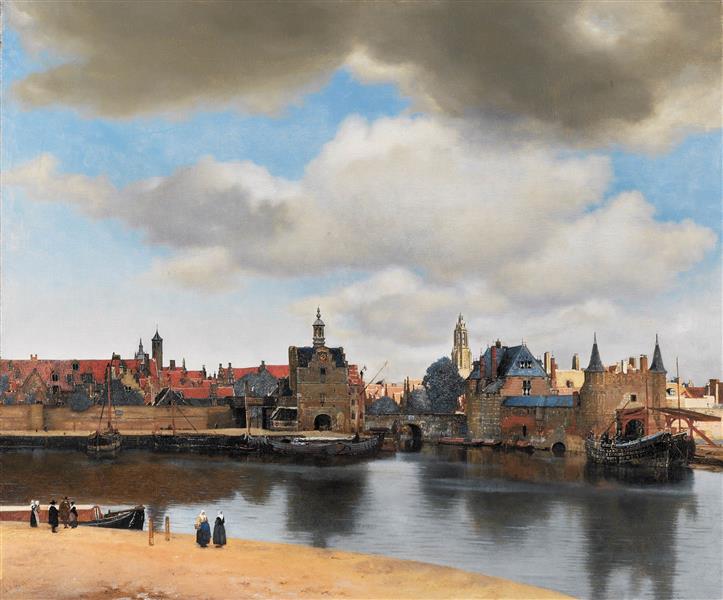View of Delft
Mauritshuis, Hague, Netherlands
Johannes Vermeer, 1661
This accurately observed landscape shows the buildings of the artist's hometown of Delft, its roofs and steeples, caught in shadow and light, beneath the gathering clouds in a blue sky. The waters of the Schie Canal shimmer with rippling currents and the reflections of buildings. A number of precisely detailed people gather on the shore in the left, each of them representative of Delft life. Yet, the light here is what matters, as the sky takes up almost two thirds of the canvas, its contrasting tones creating glowing areas of illumination and the shadows of dawn. As art historian Adriaan Waiboer wrote, while "Vermeer was truly capturing what he saw in front of him," he primarily "wanted to create a special illusion...he wanted to paint light." Using only white, ultramarine, yellow ochre, and madder lake, a rich shade of red, the color palette is very simple yet employed with subtle tonalities to create a feeling of harmony.Vermeer painted three landscapes of his hometown, and this cityscape is considered one of his masterpieces. As art historian Mariët Westermann wrote, "The scene's varied light effects look so natural...that the eye ignores what the mind knows: that this light is high artifice, that it is a work of painting." The painting led to the Vermeer's rediscovery when the French critic Thoré-Bürger saw it in 1842, and as a result, went on to influence subsequent artists, including Camille Pissarro, Manet, Edgar Degas, and Henri Fantin Latour. This painting is also one of the artist's most popular, as shown in its being reproduced by the Royal Dutch Mint on 2011 gold commemorative coins in 2011. The famous French novelist Marcel Proust said, "Ever since I saw the View of Delft in the museum in The Hague, I have known that I had seen the most beautiful painting in the world," causing him to include the work in his seminal novel Remembrance of Things Past (1908).
